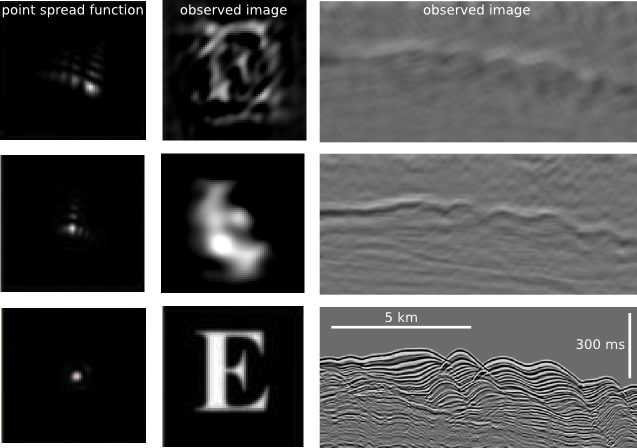Filters that distort vision
/Almost two weeks ago, I had LASIK vision correction surgery. Although the recovery took longer than average, I am seeing better than I ever did before with glasses or contacts. Better than 20/20. Here's why.
Low order and high order refractive errors
Most people (like me) who have (had) poor vision fall short of pristine correction because lenses only correct low order refractive errors. Still, any correction gives a dramatic improvement to the naked eye; further refinements may be negligible or imperceptible. Higher order aberrations, caused by small scale structural irregularities of the cornea, can still affect one's refractive power by up to 20%, and they can only be corrected using customized surgical methods.
It occurs to me that researchers in optometry, astronomy, and seismology face a common challenge: how to accurately measure and subsequently correct for structural deformations in refractive media, and the abberrations in wavefronts caused by such higher-order irregularities.
The filter is the physical model
Before surgery, a wavefront imaging camera was used to make detailed topographic maps of my corneas, and estimate point spread functions for each eye. The point spread function is a 2D convolution operator that fuzzies the otherwise clear. It shows how a ray is scattered and smeared across the retina. Above all, it is a filter that represents the physical eye.
 Point spread function (similar to mine prior to LASIK) representing refractive errors of the cornea (top two rows), and corrected vision (bottom row). Point spread functions are filters that distort both the visual and seismic realms. The seismic example is a segment of inline 25, Blake Ridge 3D seismic survey, available from the Open Seismic Repository (OSR).Observations in optics and seismology alike are only models of the physical system, models that are constrained by the filters. We don't care about the filters per se, but they do get in the way of the underlying system. Luckily, the behaviour of any observation can be expressed as a combination of filters. In this way, knowing the nature of reality literally means quantifying the filters that cause distortion. Change the filter, change the view. Describe the filter, describe the system.
Point spread function (similar to mine prior to LASIK) representing refractive errors of the cornea (top two rows), and corrected vision (bottom row). Point spread functions are filters that distort both the visual and seismic realms. The seismic example is a segment of inline 25, Blake Ridge 3D seismic survey, available from the Open Seismic Repository (OSR).Observations in optics and seismology alike are only models of the physical system, models that are constrained by the filters. We don't care about the filters per se, but they do get in the way of the underlying system. Luckily, the behaviour of any observation can be expressed as a combination of filters. In this way, knowing the nature of reality literally means quantifying the filters that cause distortion. Change the filter, change the view. Describe the filter, describe the system.
The seismic experiment yields a filtered earth; a smeared reality. Seismic data processing is the analysis and subsequent removal of the filters that distort geological vision.
This image was made using the custom filter manipulation tool in FIJI. The seismic data is available from OpendTect's Open Seismic Repository.









 Except where noted, this content is licensed
Except where noted, this content is licensed